




Today's Medicine
Customized Care for Advanced Orthopedic Healing

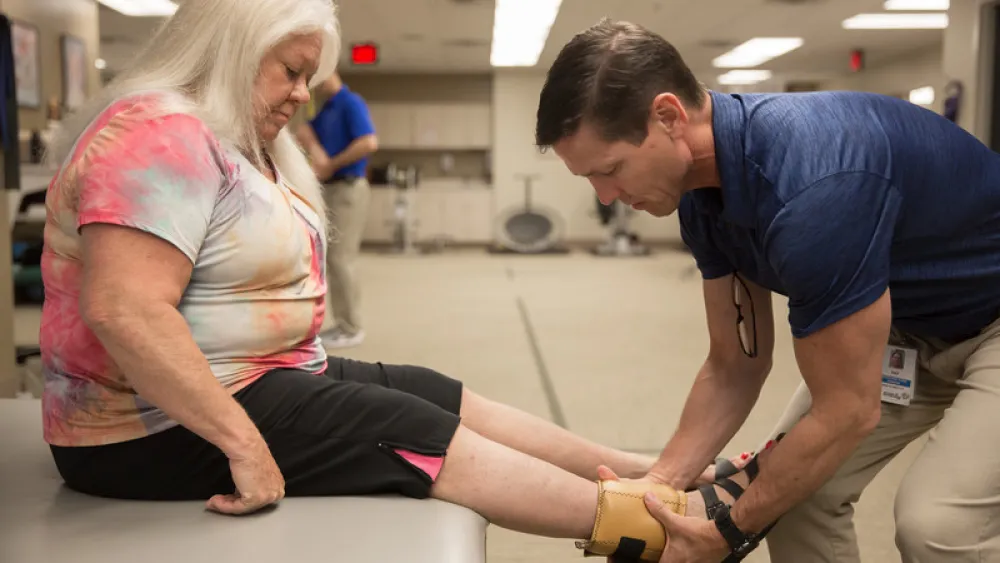
“They’ve worked really well with me on getting my knee straight and making it bend", said Les who owns a greenhouse business outside Elk City. "And they are working to make sure I don’t limp. It’s really helped me get better.”
Les spent years on her knees, getting her hands dirty and making her plants look beautiful. But time eventually took its toll. She had her right knee replaced in March, and she says the thing she’s looking forward to the most is having the other one done. “I’m aiming for August,” Les said. “I’m so tired of the arthritis pain.”
Relieving joint pain
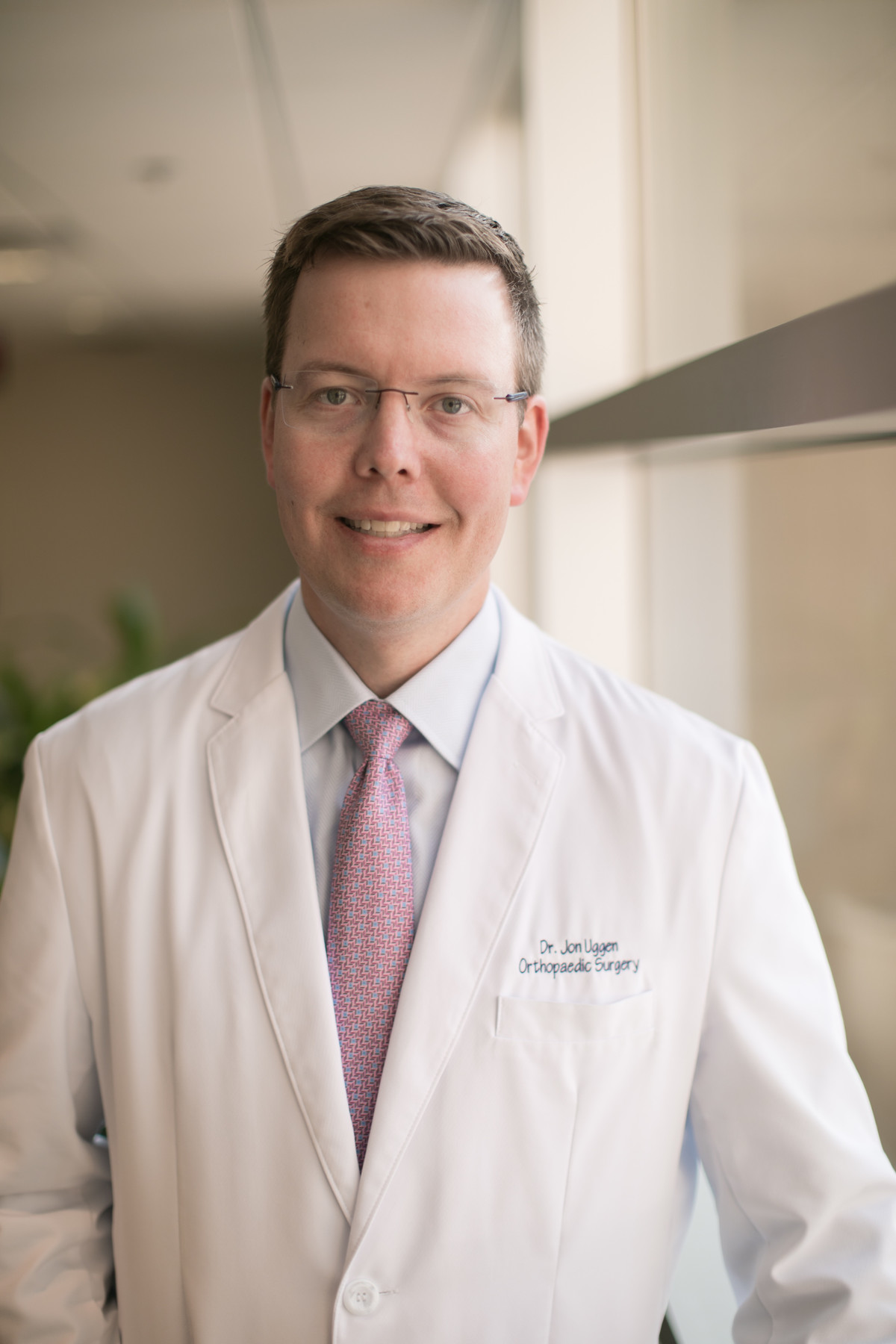 Jon Uggen, MD, is just one of the talented orthopedic surgeons at Methodist Physicians Clinic Orthopedics. He has seen how debilitating arthritis and joint pain can be for patients. He also knows the fear that can come with a visit to the orthopedic surgeon.
Jon Uggen, MD, is just one of the talented orthopedic surgeons at Methodist Physicians Clinic Orthopedics. He has seen how debilitating arthritis and joint pain can be for patients. He also knows the fear that can come with a visit to the orthopedic surgeon.
“A lot of times patients are afraid to come in because they think they need surgery right away, but that's often not the case,” Dr. Uggen said. “The majority of my patients actually don't need surgery, and we are able to identify the problem and improve the symptoms significantly with our non operative treatments.”
An orthopedic surgeon provides a thorough exam and diagnosis to help determine a patient’s treatment options. Those can be surgery – perhaps a hip or knee replacement like Les’ – or other, much less invasive, options.
“I always tell my patients we have a lot of tools in our toolbox to get them feeling better," Dr. Uggen said. “We may offer options such as over-the-counter or prescription anti-inflammatory medications, or topical creams that can be absorbed into the skin. There are also cortisone injections or lubricating injections known as viscosupplementation. Other options offered by our physiatry team can also help with pain and diminish the need for opioid pain relief before and after surgery.”
Technology tackles the pain
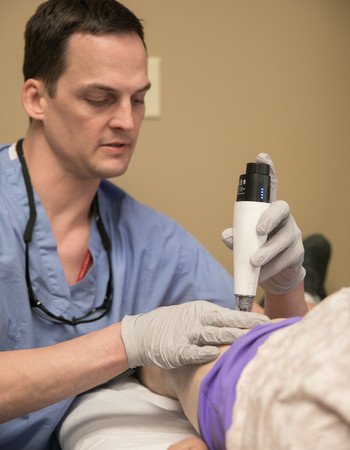 One of the newest options in the arsenal for pain relief is a treatment known as Iovera®. It’s a cryoablation procedure that is now helping Methodist orthopedic patients through the worst of the pain associated with total knee replacement – often without the need for opioid medications.
One of the newest options in the arsenal for pain relief is a treatment known as Iovera®. It’s a cryoablation procedure that is now helping Methodist orthopedic patients through the worst of the pain associated with total knee replacement – often without the need for opioid medications.
“Basically we are freezing a couple select nerves in the knee to decrease pain in the joint," Dr. Jeremy Gallant, a physiatrist at Methodist Physicians Clinic HealthWest. "We are more or less putting the nerves into shock for 30 to 90 days, eliminating or minimizing pain."
Mary Jo Petersen was scheduled for total replacement of both knees in late June. When she arrived for her Iovera treatment with Dr. Gallant a few weeks prior, she was using a cane and said her pain in both knees was at a “10” on the pain scale.
“I am an outdoors person and I like to run after my grandkids, but it’s something I just can’t do right now,” said Mary Jo.
An hour and a half after her treatment began, Mary Jo walked out of Dr. Gallant’s exam room pain-free for the first time in 20 years.
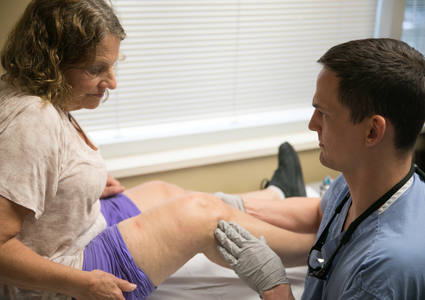 “My pain is at a zero," said Mary Jo, astonished. "I wanted this because it would help with the pain after my surgery. Now I’m looking forward to it! This feels like a bonus!”
“My pain is at a zero," said Mary Jo, astonished. "I wanted this because it would help with the pain after my surgery. Now I’m looking forward to it! This feels like a bonus!”
“Our orthopedic surgeons regularly involve us in patient care, whether it’s transferring patient care to us or including us in their care for specialty noninvasive procedures,” said Dr. Gallant. “It’s this whole patient approach and entire spectrum of care, which may include treatments like Iovera, which make the patient experience at Methodist so special.”
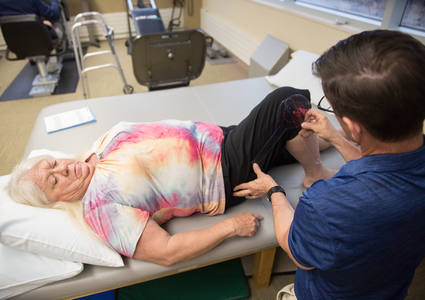 An important role in rehabilitation
An important role in rehabilitation
Whether surgery is part of a patient’s care or not, orthopedic surgeons rely heavily on the team of Methodist physical therapists to help get patients back on their feet.
“We often provide patients with exercise programs, whether it’s something they can do at home or formal physical therapy,” said Dr. Uggen. “We have an amazing physical therapy team that's able to coordinate with us after we have the appropriate diagnosis and work on areas that we need to work on. With knees, that means strengthening the muscles around the joint that provide inherent stability and helping alleviate the pain and symptoms.”
“Our orthopedic surgeons typically send a patient to us first to see if we can make strides in pain relief without cutting,” said Pat Wilson, PT, a physical therapist at Methodist Physicians Clinic HealthWest. “When we see a patient after surgery, my role is to help them recover from that surgery, stay on track in the healing process and hit those milestones so they can move again without all that pain.”
It’s this continuum of care that helps patients like Les take great strides in healing.
This story was featured in the Summer 2018 The Meaning of Care magazine.

